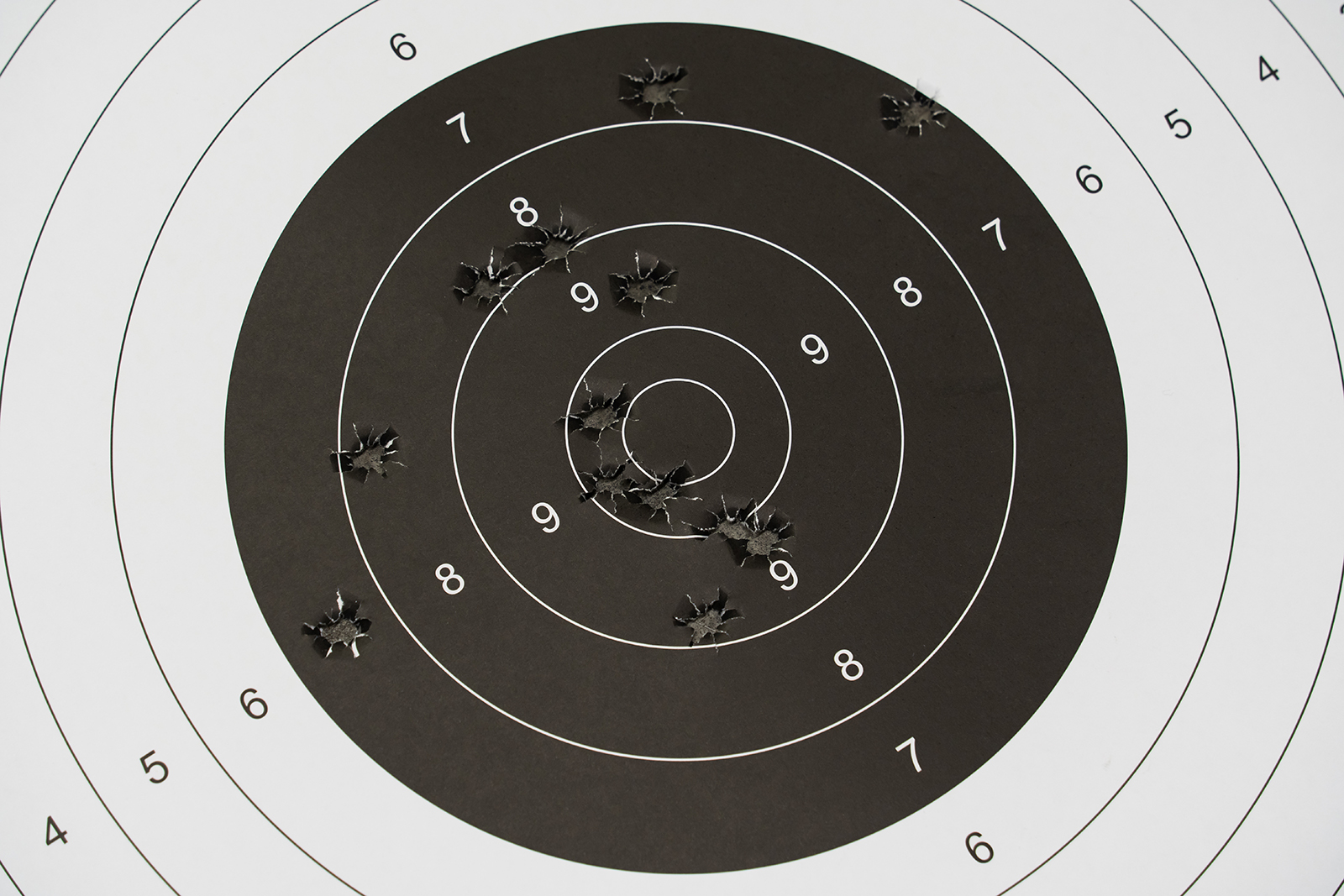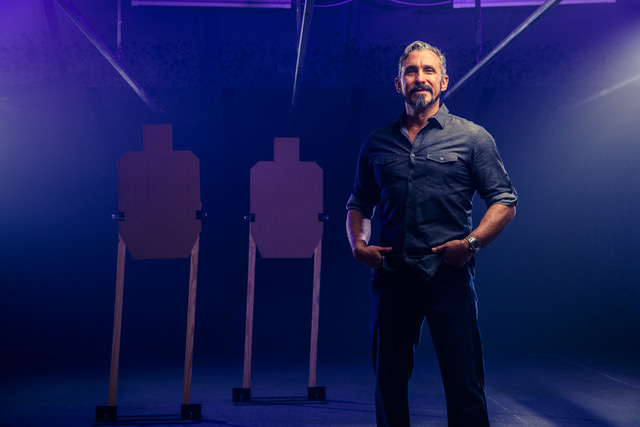To be better prepared for an unknowable, unknown event, we must have a better understanding of recorded defensive gun uses. These are critical incidents where a legally armed individual was able to stop a violent crime by either presenting or using a firearm. This information is valuable to better understand the environment we are walking into, as well as helpful when designing training. The observable information can be divided into trained versus untrained responders. The caution I issue is to remember these statistics are not a guarantee. This information greatly helps us prioritize our training, but more importantly, helps us be somewhat anticipatory under certain circumstances. Here are the five major observations and their effects on training.
- The majority of defensive gun uses happen outside of the home
- The distances ranged from inside five yards for the majority to out to 15 yards
- The number of rounds fired ranged from one, up to five rounds
- The highest percentage of defensive gun uses happened in parking lots or at convenience stores/gas stations
- While the majority of the incidents occurred during hours of darkness, the specific attack sites are well lit areas
If we are carrying a firearm for self-defense, it is implied we are prepared to use deadly force. A great majority of people have yet to come to grips with the possible of using deadly force. This is an important distinction—the notion that should your life or the life of a loved one be threatened, you may be required to use deadly force to stop the attack. While the law looks at responding to a violent attack with a firearm as deadly force, it does not mean the perpetrator will die. A great many survive for a variety of reasons. Humans are durable, stress can make shot placement questionable and the mere presence of a firearm can deter or stop the attack, resulting in the perpetrator fleeing. The reason the attack stopped is not important; what is important is the firearm was either the sole reason or a major reason your life was saved.
When deciding to carry a firearm and the accompanying responsibility, it affords better preparation. That is a big win, but it is also only part of an overall strategy. Training is key—the more training the greater the chances of surviving a violent attack. As we look at training requirements, it is easy to get overwhelmed. There is gun safety, gun handling, basic marksmanship and tactics. If there is little experience with firearm ownership, start from the beginning. Gun safety is the first topic. Know and live the gun safety rules religiously to safeguard against a negligent discharge that could injure or kill. Understand the operation and features of the firearm. Read the owner’s manual and know how to load, unload, reload and clear stoppages. Where the rubber meets the road is with marksmanship principles. While violent attacks happen in close proximity, you can still miss. Tactics are as much an art as they are science. No two violent attacks will be the same, as such no applied tactics will have the same outcome.
It Is Far Less Safe Outside Our Homes
As we study violent attacks, we see patterns emerge. These patterns are only informative and not a hard and fast rule. The vast majority of violent crimes against persons occur outside the home. This is somewhat of a departure from traditional thinking of violent crime such as home invasions and burglaries. While these types of events still happen, more violent crime happens outside the home. Since we are discussing violent crime, what are the five types? In order of frequency, they are assault, robbery, rape, murder and kidnapping. While many of these crimes can be committed at home, they occur far more regularly out of the home. Part of a good personal protection plan: in public, shift the mindset into a higher alert and preparation level. Using the color code of awareness, switch from condition white to yellow. Condition yellow is known as being relaxed alert. In this state an attack doesn’t come as a complete surprise. Instead, the response should be somewhat preplanned. This allows you to run an existing plan rather than try to make one up under stress. The best tactic is to be aware of your surroundings at all times and act accordingly.
Expect Close Range Encounters, but…
Since these types of attacks require proximity, the majority of them occur at close range. All violent crimes against persons have proximity as the common denominator. This makes sense since they have to be close to be effective. It would be exceptionally hard to rob, assault, rape or kidnap you from across the street, down the aisle or around the corner. The average range is three to five yards. This puts the attack within close range but outside of contact range. One thing to keep in mind is at this distance, it is very dangerous. Being just outside of contact range means far fewer options such as gun grabs or take aways. These tactics are extremely dangerous options and should only be considered as a last resort or in extreme situations. When training, spend the majority of time at close range. Work on a smooth and quick drawstroke that brings to bear the muzzle as soon as possible. Then deliver a fast, first round lethal strike to the vital region. Being outside of contact range means you may need to feign compliance initially to create the opportunity to distract the perpetrator long enough to draw your firearm.
Train To Deliver Rapid, Multiple Rounds
Another interesting observation is the number of rounds fired. The low end was one round, typical of a counter ambush tactic. When the perpetrator was faced with armed resistance, they often abandoned their crime. In some cases, presenting a firearm is successful at ending an attack, but not a guarantee. There is a problem with this type of thinking, the thought that the mere presence of a firearm is a deterrent. The real deterrent was the choice the bad guy made to avoid injury or incarceration. My point is the reason to draw the firearm is because deadly force justification has been met. Much different from drawing the firearm as a scare tactic with no intention of using deadly force. Rounds fired in excess of a single round are typical of a fleeing perpetrator and how fast these events occur. There is a delay between completing an action such as deciding to use deadly force and recognizing the attack has stopped. During that time period it is quite possible to deliver multiple rounds. Other realistic implications has to do with poor shot placement and the perpetrator being of unsound mind and body due to alcohol, drugs or religious fanaticism. If we miss the vital region, it will take longer to stop the attack. In addition, the human body can absorb a lot of damage and remain combat effective. The solution is continuing to engage the perpetrator until they have succumbed to their wounds and stops fighting or due to the violence of action, chooses to abandon the fight and flee. Either case, this is a reason we see this low round count.
Be On High Alert in Transition
Since we know the majority of defensive gun uses don’t happen in the home, where do they happen? They happen in what is called transitional spaces. These are locations that must be navigated on our route from one location to another. An easy example would be a parking lot which represents the transitional space from our vehicle to our intended destination. It is here that a great many criminal acts are committed. Why? They are a target rich environment. There are lots of potential victims geographically. If one looks less promising, another will enter the picture shortly. Not paying attention to your surroundings and being distracted by something such as phone puts you at a higher risk. Transitional spaces can be anything from your driveway, gas station or even a drive through. When entering these spaces, shift from yellow to orange. Look for anything out of place. Be especially weary of any unplanned contact from unknown persons or what we call unknowns. Have a plan that starts the moment these transitional spaces are approached and stay on high alert.
Nighttime Doesn’t Always Mean Darkness
There is another pattern to these violent crimes occurring—darkness—and there may be a pretty simple reason why. Perpetrators can be somewhat obscured from their intended victim until the last minute. Other reasons may include fatigue from a long workday which lowers alertness. There is typically less pedestrian traffic at night making for fewer witnesses. While these acts are committed at “nighttime” they are typically committed in well-lit areas. Artificial lighting from light posts, headlights, storefronts, to name a few, create a less dark condition. The need for a weapon mounted light is less essential than a handheld light. Since a handheld light is just that, a flashlight, it is much easier to already have in hand. Moving through these transitional places with a flashlight in hand can lead to a counter ambush. Shining a powerful beam into dark spaces or along your approach can signify to a would-be perpetrator you are more alert and prepared—probably not the best victim.
As more and more violent crimes are documented, valuable information is revealed. We know the majority will happen outside the home. Once in public, out the front door, set condition yellow. Bad guys will need to be close to commit these crimes. Pay attention to people who get within a double arms interval. Most will use some sort of justification for closing this distance such as asking for directions or the time. Be cautious and watch their hands. High-capacity magazines are a force multiplier, but we must recognize that the need for a reload during a violent attack is remote. Adjusting training to focus on other areas is a good use of time, talent and treasure. Hours of darkness does not always equal no light. In urban sprawl there is enough artificial light to make the use of weapon mount lights less useful. As we look to prioritize training programs, this information is helpful, but as mentioned earlier, not a hard rule. Once a modicum of proficiency is achieved, work to be a more well-rounded shooter. Remember, in the end, we are still training for an unknown, unknowable event in the end.


